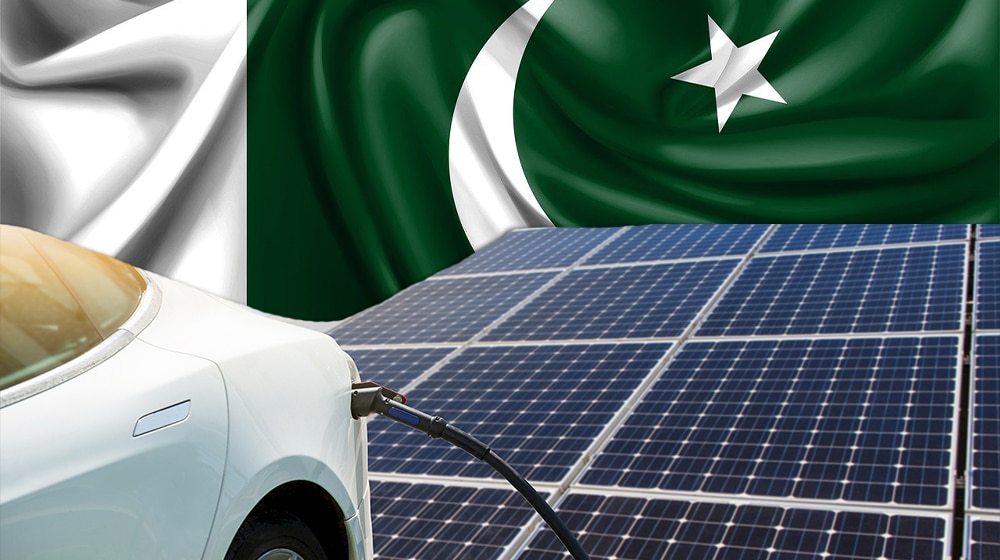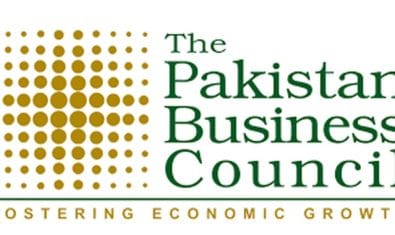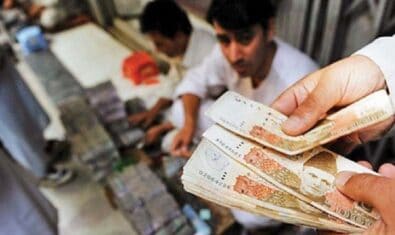Pakistan aims to enhance energy efficiency by ensuring cost-effective measures such as shifting public/private buildings to solar, working on electric vehicles and charging stations to streamline transport, and doing energy audits.
According to the National Energy Efficiency and Conservation Authority’s (NEECA) Energy Saving Policy 2022, there will be a national contingency energy-saving plan in place to stabilize the economy, conserve energy, and cut the import bill by placing special attention on the top five sectors burdening the country.
In light of the provisions made in the NEEC Act 2016, five sectors i.e., industry, transport, buildings, energy (Power & Petroleum), and agriculture have been prioritized to achieve energy efficiency and conservation goals. The description of each sector is given as;
Industrial Sector
The industry is responsible for the largest share of energy use at 37.1 percent. Improving energy efficiency in the industry reduces operating costs and can help companies become more competitive. This policy sets the target of saving 2.3 metric tons of energy (MTOE) which will result in an emission reduction of 8.97 metric tons of carbon dioxide (MTCo2) by 2030.
- The industrial sector is highly energy intensive with an intensity of 0.117 kgoe/SGDP(PPP) versus 0.08 kgoe/SGDP in Europe.
- There are approximately 1 million motors operational in different industrial units with an energy-saving potential of 7-10 percent.
- Approximately, there are 15,000 boilers operational in different industrial units, which are mostly inefficient with 10 -15 percent saving potential.
- There are around 1200 Industrial gas-based Captive Power Plants with an efficiency of not more than 34 percent, and an efficiency of more than 60 percent can be achieved.
Internationally, there is an increasing demand for products with higher levels of energy efficiency as a means to reduce carbon emissions. Improving energy efficiency in the industrial sector requires a broad range of initiatives to improve the capacity of energy managers as well as to encourage the adoption of key technologies that can have the largest impact across the sector and the economy.
Building Sector
The building sector includes all kinds of residential, commercial, public, and private buildings. Only the residential buildings alone account for 22.2 percent of final energy consumption and 24.87 million tons of GHG emissions. This policy sets the target of saving 2.2 MTOE of energy which will result in an emission reduction of 8.29 MTCo2 by 2030.
The demand for new construction is growing at a rate of 5.3 percent annually due to high population growth and urbanization.
- By 2023, over 40 million people are expected to live in urban centers and towns, which implies that many buildings will be under construction or are being planned.
- Federal Public Building alone has the potential of 5,200 MW of solarization.
These constructions demand a high level of energy efficiency to minimize energy consumption in the long run. Improving energy efficiency across the building sector requires a broad range of initiatives like energy audits, energy management systems, retrofitting, solarization, and implementation of Energy Conservation Building Codes (ECBC) in new and existing buildings. The regulations shall be prepared to incentivize the real estate developers to incorporate these interventions in building design.
Solarization at public and domestic buildings coupled with energy audits in a phased manner can significantly contribute to energy conservation and efficiency. The compliance of energy audits, energy standards and revision of relevant regulations in collaboration with concerned federal and provincial organizations shall be implemented.
Transport Sector
The transport sector accounted for 30.3 percent of total final energy consumption in 2020 and it heavily relies on imported oil. Liquid fuels dominate the transport energy mix. This policy sets the target of saving 2.48 MTOE of energy which will result in an emission reduction of 7.7 MTCo2 by 2030.
- The number of cars and motorcycles has been growing at 10 percent annually, consequently increasing the demand for fuel.
- As of 2021, the total number of registered vehicles is around 32.3 million out of which two-wheelers (motorbikes) have reached 25 million.
One way to bring energy efficiency benefits to the transport sector is through the electrification of existing (two and three-wheelers) and new vehicles. Further, the National EV Policy provides NEECA with the mandate to develop and enforce standards for EV charging stations. Standardization is extremely important for a safe reliable, accessible, and affordable EV charging ecosystem. More focused measures shall be designed such as:
- Promote and encourage the adoption of emerging technologies, codes, and standards associated with Electric Vehicle Supply Equipment (EVSE), Electric Vehicles (EVs), and the related charging infrastructure in collaboration with national standards bodies and other stakeholders.
- Development and implementation of National Fuel Economy Standards for the transport sector of Pakistan.
- Promotion and operationalization of Vehicle Tune-up Centers for Internal Combustion Engine (ICE) vehicles across the country.
- Promoting mandatory mass transit mechanisms for cities and vehicle/fleet retirement age.
- Promoting management practices like higher toll taxes on the single occupancy vehicle on the motorway for more than 800CC cars.
- Encouraging major public sector transport fleet holders to carry out annual energy audits.
- Encouraging research, development, and innovation related to technology, management practices, and mass transit mechanisms for energy-efficient transportation and mobility in coordination with the NTRC.
Energy (Power & Petroleum)
The energy efficiency and conservation in Pakistan’s energy sector requires sectoral measures at both Power and Petroleum Divisions under the umbrella of the Ministry of Energy:
Power Sector
Power sector losses in Pakistan are high compared to regional countries. The average power distribution losses in Pakistan are about 20 percent and for some DISCOs, these losses reach more than 38 percent. The installed generation capacity has reached at 41557 MW against the maximum total demand of 30,000 MW, whereas the transmission and distribution network is constrained to evacuate 22,000 MW which leads to the operation of inefficient power plants over efficient power plants.
The energy efficiency & conservation measures will help to reduce the losses of the power sector. This policy sets the target of saving 1.05 MTOE of energy which will result in an emission reduction of 6.1 MTCo2 by 2030.
EE&C measures can enhance the share of renewables in the energy mix and reduce the cost of electricity through retrofits and solarization. More focused measures shall be designed such as:
- Collaborate with power sector entities (such as but not limited to, GENCOs, NTDC, and DISCOs) for jointly designing and commissioning energy loss reduction programs and to improve energy efficiency in power generation, distribution, and transmission, apart from strict compliance of efficiency standards and conservation measures.
- NEECA will develop mechanisms and programs for Demand Side Management (DSM) in collaboration with MIRAD (Market Implementation & Regulatory Affairs Department).
- Energy Efficiency & Conservation Cells will be established in all the DISCOs for the capacity development of power sector entities to implement the EE&C mandate under the National Electricity Policy (NEP) 2021
- Heat Rate Assessment of GENCO and IPPs in collaboration with CPPA-G and NEPRA
- Develop and design gas-to-electricity shift for end-consumers.
Design and implement Renewable Portfolio Standards (RPS) in collaboration with NTDC, GENCOs, and IPPs, especially where the power evacuation is underutilized.
Petroleum Sector
The petroleum sector has more than 70 percent share of the primary energy supply in the country with a share of oil 22.6 percent, gas 33.1 percent, LNG import 10.3 percent, and LPG 1.3 percent. There is a significant savings potential in the Petroleum sector i.e. improvement in the quality of oil & gas supply, midstream and downstream. This policy sets the target of saving 0.4 MTOE of energy (gas) which will result in an emission reduction of 0.94 MTCo2 by 2030.
- Pakistan’s unaccounted-for gas (UFG) losses in the gas network for SSGC and SNGPL stand at about 15 percent and 11.5 percent respectively.
NEECA will collaborate with OGRA, gas utility companies (SNGPL and SSGC), oil refineries, and LNG Terminal operators to;
- Promote incentive-based demand participation mechanism through a transparent regulatory framework.
- Reduce energy losses to comply with international standards and regulatory benchmarks
- Design and implement oil and gas loss reduction programs.
- Assist the gas sector utilities with requisite techno-economic analysis and legal cover for effective implementation of the winter load management programs.
- Support in basic and annual load profile assessment of domestic, commercial, and industrial consumers for energy efficiency gains.
Agriculture Sector
The agriculture sector accounts for 1.5 percent of total final energy consumption. The use of commercial energy is steadily increasing as mechanized practices are being adopted to improve agricultural productivity. The process of irrigation through diesel and electric-powered pumps is extremely inefficient. Effective energy efficiency measures for tube well, tractors, and other farm machinery can help farmers to save energy, reduce production costs, and increase yields. Energy-efficient machinery can produce a positive impact on farmers’ overall well-being.
This policy sets the target of saving 0.64 MTOE of energy which will result in an emission reduction of 2.82 MTCo2 by 2030. A range of initiatives shall be initiated to improve energy efficiency in the agricultural sector including:
- Develop and promote energy efficiency standards for water pumps and tube wells in the country.
- Prepare and implement fuel economy standards for tractors and farm machinery
- Introduce credit products with ZTBL and other similar specialized financial institutions for energy-efficient agriculture tractors and farm machinery
- Promote national and provincial coordination/integration of pumping with water resource management and on-farm energy efficiency measures.
The National Energy Efficiency and Conservation Policy of 2022 identifies mechanisms to ensure deep-rooted institutionalization, operationalization, and implementation of EE&C in the country and consists of sectoral measures for Industry, Building, Transport, Energy (Power and Petroleum), and Agriculture sectors. The policy also informs, on the basis of techno-economic analysis, enforcement mechanisms required for the adoption and compliance of EE&C regulatory measures along with precise guidelines for coordination with the provincial governments and regions.
NEECA says the aforesaid policy measures will help steer Pakistan towards a culture of conservation and efficient use of energy resources to achieve sustainable development. They will double the rate of improvement in energy efficiency, ensuring cost-effective measures, and developing market-based mechanisms.






















You make me laugh with the headline of your article.
When you have an economy which comprises of individuals such as yourself who are always negating all govt initiatives … you will get what you deserve. The public needs to take heed of the seriousness and the oublic also needs to stop ‘looting’ as an excuse to make ends meet…
You need to grow up!!!